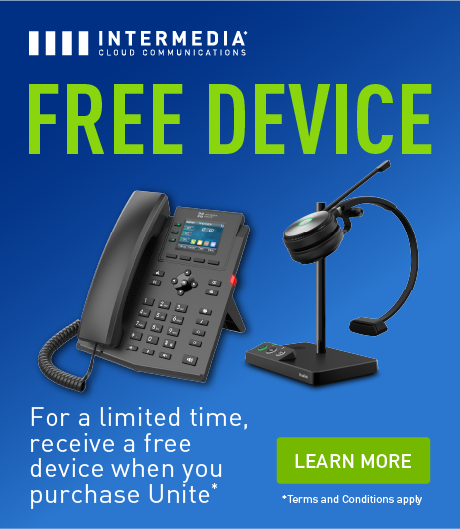Communication is no longer limited to phones and email. Today’s businesses need flexible tools to connect internally, support remote teams, and engage customers across platforms. If you’re evaluating cloud-based communication options, you’ve likely come across two acronyms: UCaaS and CPaaS.
They sound similar, but serve different purposes. Choosing the right one depends on your use case, internal capabilities, and long-term goals. This guide breaks down UCaaS vs CPaaS, so you can decide which technology is the better fit for your business.
Quick Takeaways
- UCaaS is a turnkey platform that supports team communication with voice, video, and messaging.
- CPaaS gives developers the tools to build communication features into custom workflows.
- Use UCaaS to improve collaboration. Use CPaaS to enhance customer interactions.
- The right solution depends on your use case, technical resources, and communication strategy.
- UCaaS vs CPaaS doesn’t have to be either-or. Many businesses benefit from both.
What Is UCaaS?
Unified Communications as a Service (UCaaS) is a cloud-based platform that brings together voice, video, messaging, and collaboration tools into one system. Instead of managing separate solutions for meetings, file sharing, and business calls, UCaaS unifies them under a single provider.
Most UCaaS platforms include:
- Voice and phone services
- Video conferencing
- Team chat and instant messaging
- Presence and status indicators
- File sharing and screen sharing
- Voicemail with transcription
- Mobile and desktop apps

UCaaS is designed for the end user—your employees. It helps teams stay connected whether they’re in the office, at home, or on the move. It also reduces IT burden by eliminating on-premise hardware and centralizing communication tools.
What Is CPaaS?
Communications Platform as a Service (CPaaS) is a developer-focused solution that allows you to embed communication features into your own apps, systems, or websites using APIs and SDKs.
With CPaaS, businesses can build:
- Two-factor authentication via SMS
- Automated appointment reminders
- Click-to-call functionality
- Chatbots and messaging widgets
- Voice or video customer support within mobile apps
- Alerts or order updates via SMS or voice
Unlike UCaaS, CPaaS is not a pre-built communication suite. It’s a flexible platform that gives developers the tools to create custom workflows and integrate communication features wherever they’re needed.
UCaaS vs CPaaS: Key Differences
| Feature | UCaaS | CPaaS |
| Primary Users | Business end users | Developers and IT teams |
| Use Case | Internal communication and collaboration | Embedded communication in apps or services |
| Flexibility | Turnkey solution | Highly customizable |
| Setup | Fast deployment, minimal coding | Requires development resources |
| Ideal For | Team communication | Customer-facing interactions |
In short: UCaaS is best for organizations that want an all-in-one platform out of the box. CPaaS is ideal for teams that want to build communication into existing products or services.
When to Choose UCaaS
UCaaS is a strong choice if your goal is to improve internal collaboration and standardize how your team communicates.
Choose UCaaS if:
- You want a single platform for phone calls, meetings, and messaging
- Your business relies on real-time collaboration across departments or locations
- You’re moving away from legacy phone systems or fragmented tools
- You don’t have the internal resources to build and manage integrations
- You need fast deployment with minimal technical complexity
UCaaS simplifies communication, increases productivity, and improves the employee experience. It’s especially helpful for remote teams, hybrid offices, and growing companies that need scalable tools without adding infrastructure.
When to Choose CPaaS
CPaaS is ideal if your business wants to create a tailored customer experience through real-time communication features built directly into your applications.
Choose CPaaS if:
- You want to send SMS updates, appointment reminders, or verification codes
- Your customer support team needs click-to-call or in-app messaging
- You have an IT team or development partner who can manage integrations
- You want full control over how and when communication is triggered
- Your goal is to enhance mobile apps, web platforms, or customer portals
CPaaS empowers companies to improve customer engagement by making interactions smoother, more automated, and available exactly where the customer is.
Can You Use UCaaS and CPaaS Together?

Yes. Many businesses use UCaaS and CPaaS together to support different types of communication.
For example:
- Your employees use UCaaS for internal meetings, team messaging, and client calls.
- Your customer support team uses CPaaS to trigger appointment reminders, delivery alerts, or chat support inside your mobile app.
- Your developers build automated workflows using CPaaS while your sales team uses UCaaS for outbound voice calls.
Combining both solutions allows businesses to streamline internal operations and improve customer-facing experiences without sacrificing flexibility.
The key is choosing a provider that supports interoperability, or offers both solutions under one platform.
How to Choose the Right Provider
When evaluating UCaaS vs CPaaS providers, start by mapping your priorities. Do you need a ready-to-use platform for your team? Or are you building a custom experience for your customers?
Here’s what to look for:
Business Needs
Understand whether your priority is internal collaboration (UCaaS) or embedded communication (CPaaS). Some businesses need both.
Integration Options
Make sure the platform can connect with your existing tools—like CRM systems, helpdesk platforms, or ERP software.
Reliability and Performance
Look for uptime guarantees, strong call quality, and built-in failover protections.
Security and Compliance
Ensure the platform meets industry standards like HIPAA, GDPR, or SOC 2, especially if you’re handling sensitive data.
Ease of Use vs. Customization
UCaaS should be user-friendly with minimal onboarding. CPaaS should offer detailed documentation, SDKs, and API flexibility.
Support and Scalability
Choose a provider that offers 24/7 support and can grow with your team or infrastructure needs.
Build the Right Communication Strategy with Intermedia
Understanding the difference between UCaaS vs CPaaS helps you make a more informed decision. UCaaS is the right fit for businesses that want a fully managed communication platform for their employees. CPaaS is better for those who want to embed communication into their own apps, tools, or services.
Before choosing a provider, assess your current tools, team resources, and long-term communication goals. The right platform will improve productivity, reduce friction, and enhance the experience for both employees and customers.
Need a communication solution that fits your business model? Intermedia offers both UCaaS and CPaaS solutions designed to support internal collaboration and external customer engagement. Discover how you can streamline communication, scale faster, and deliver better service. Request a demo today.
July 18, 2025
Explore other posts on these topics: Employees Unified Communications





